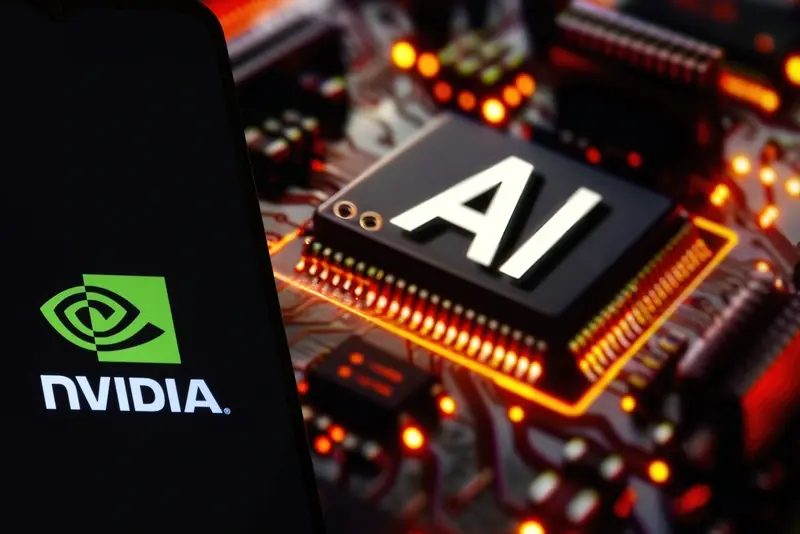
Never mind Fed speakers singing from the same ‘rates on hold’ hymn sheet, investors had AI (artificial intelligence) on the brain over the past week with chip powerhouse Nvidia (NVDA:NASDAQ) once again smashing Wall Street estimates out of the park.
Detail below, but the net effect was a significant boost to the technology-focused Nasdaq Composite Index, which scaled new all-time highs. The benchmark S&P 500 also briefly touched a new intra-day high, but gains were harder to hold on to, while the small cap Russell 2000 Index again lagged.
Troubling news for the Fed came in the form of a stronger than expected purchasing managers index reading for April, signalling US business activity accelerating to its fastest pace in two years, giving pause for inflation doves.
On the same day (22 May), weekly jobless claims fell for the second week in a row pointing to continued strength in the labour market. Minutes from the last Fed policy meeting (21 May) showed officials saw the labour market coming back into balance but at a slower rate.
Nevertheless, bond yields rose with the 10-year US treasury yield moving back above 4.5%. Shares in solar energy companies put in a good showing with First Solar (FSLR:NASDAQ) topping the S&P 500 leaderboard, jumping 28% on anticipated strong demand from datacentres.
NVIDIA
Wall Street keeps upping the estimates ante and Nvidia keeps forcing analysts to rip up projections and start again. The market wanted ‘monster’ earnings and got an entire Halloween cast, with quarterly revenues (to end Apr) +262% versus the +241% expected, net income up to almost $15 billion, and free cash flow nearly sextupling to $14.9 billion year-on-year.
Guidance for next quarter was even more upbeat than the most optimistic predictions, with strong demand for the new Blackwell chips forecast, with Key Banc Capital Markets analyst John Vinh predicting auto companies such as Tesla (TSLA:NASDAQ) will be the largest enterprise verticals this year, potentially driving several billion in revenues. That the analyst also anticipates sovereign AI deployment to start to inflect, contributing high-single-digit billion-dollar revenue this year bolsters the belief that this AI (artificial intelligence) revolution is very real.
Risks remain but right now investors are happy to ride Nvidia’s AI gravy train, pushing the share price to a record $1,037.99, the first close beyond $1,000, leaving the market cap at $2.55 trillion. Monster indeed.
PALO ALTO NETWORKS
Soft billings continued to undermine confidence in cybersecurity firm Palo Alto Networks (PANW:NASDAQ) over the past week, leaving ugly scars on the share price. After initially tumbling as much as 8%, the stock stabilised with a rough 4% decline for the week at $311.44.
It’s not exactly panic stations but a billings outlook ranging from $3.43 billion to $3.48 billion for its fiscal fourth quarter and $10.13 billion to $10.18 billion for the financial year, was not enough against elevated expectations.
Like other cybersecurity firms, Palo Alto has been facing weakness in spending by clients concerned by an uncertain economic environment. Customers, wary of the possible risks posed by placing all their digital security needs in the hands of one company after a recent spate of high-profile breaches, are also investing in multiple vendors, creating aa more bumpy growth path than both the company and investors would like.
TARGET
Despite boasting an official mascot named ‘Bullseye’, Target’s (TGT:NYSE) first quarter earnings (22 May) failed to stay ‘out of the black and in the red’, missing Wall Street expectations.
Comparable sales fell 3.7% year-on-year for the quarter (to 4 May), with inflation-fatigued shoppers reining in spending on groceries, and investors pulling back shares in the discount retailer by more than 10% to $144.41.
Chief executive Brian Cornell spoke of ‘continued soft trends in discretionary categories’, where declines were partially offset by continued growth in beauty products. But the bottom line was earnings per share ($2.03) light of the $2.06 consensus. Target’s total revenue of $24.53 billion may have been a touch above the $24.52 Wall Street was looking for but it was still down roughly $800 million year-on-year.
The Minneapolis-based retailer sounded confident of a second quarter return to sales growth and maintained its full-year forecast for flat to 2% comparable sales growth and adjusted earnings per share in the $8.60 to $9.60 range. Inventory at the end of Q1 was also 7% lower than last year.




